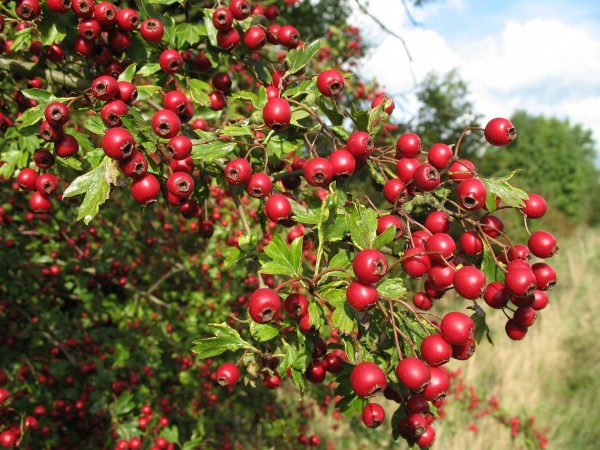Hawthorn is a useful medicinal plant that is widely used as an effective folk remedy for various diseases. Its fruits have not only healing properties, but are also used for culinary purposes.. To get the maximum benefit from it, you need to strictly follow the recommendations on how to collect and store. In this article we consider the methods of harvesting and storage of hawthorn for the winter at home.
Table of contents
When can I collect fruits, flowers and leaves of hawthorn in store
In hawthorn, all its parts are somehow useful:
- Leaves
- Berries
- Flowers
- Bark
The fruits are used for food and medicinal purposes, the remaining parts - only in medicinal. The collection of hawthorn fruit in central Russia is carried out in the period of their ripening. Hawthorn begins to ripen in autumn, around the end of September. Fully matured, it has the greatest concentration of vitamins. It is important to have time to do this before the first frost, otherwise the berries damaged by cold will be unsuitable for further storage.. In overripe condition, they begin to become covered with mold. It is undesirable to collect hawthorn from the bushes located near the busy highways or near the industrial zone - they may be high in harmful substances.
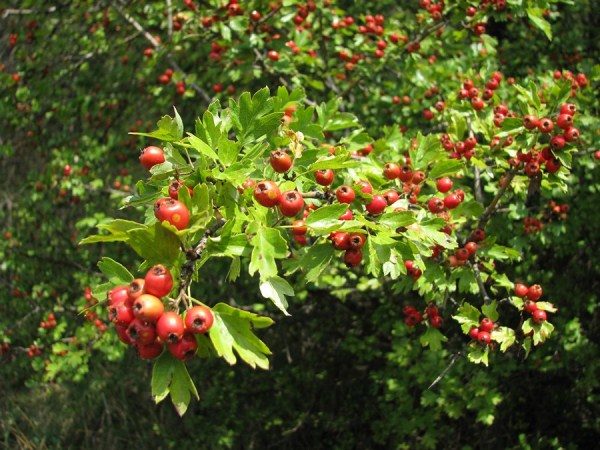
The best weather to collect is dry and calm, time is daytime, when the dew had time to dry.Ripe berries - an attractive treat for birds, so you need to have time to collect them quickly. Maturity is determined by the color of the fruit - it should be bright red. The berries are not harvested individually, but are cut off in clusters, and then carefully placed in baskets or pallets. On-site rejection of damaged, unripe, rotten, over-ripe fruits is made.
The collection of leaves begins before the appearance of flowers and carried out during the entire flowering time, starting in mid-May and ending in early June. Leave only clean, undamaged leaf blades, carefully cutting them off with the rest of the leaf.. For convenience, you can take a scissors.
Prepare hawthorn flowers possible at the initial stage of flowering, which occurs in different bushes at different times, starting in May and ending in June. You need to finish the collection within 5-6 days from the beginning of flowering of a particular bush. Inflorescences are carefully cut with shears or come off by hand, then placed in a dry container in such a way as to prevent their deformation.
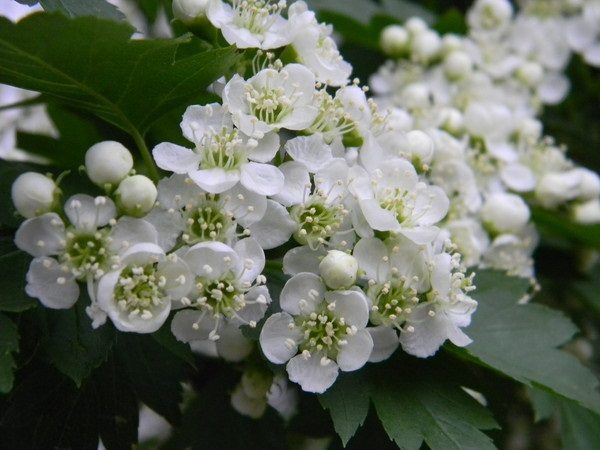
The bark is collected in the period of active movement of juice in early spring.If a liquid begins to flow from an incision made on the trunk of a plant, the time is right and the bark will easily separate from the wood. The collection of raw materials produced from young shrubs, whose age does not exceed 4 years. On the surface of the trunks make transverse annular cuts, connecting them with a straight longitudinal. Then the bark is carefully removed. To carry out this operation in the summer will not work, because in this season the movement of the juice in the plants is slow.
How to save for the winter?
Long-term storage is carried out in one of 4 states:
- Dried
- Frozen
- Canned
- In the form of aqueous or alcoholic tinctures
In the first case hawthorn dried thoroughly, after which it is stored in clean, dry containers, in a place inaccessible to moisture and sunlight, in a ventilated room. Storage is carried out in canvas bags or glass jars.In the second case, it is well washed, placed in a food container and frozen. Preparation for the future can be carried out also by conservation. in the form of jam or jam. Store it and in the form of various kinds of tincturescorked in an airtight container.
Dried fruits storage
Drying is a popular way to store hawthorn. You can do it in two ways:
- Natural (slow)
- Artificial (fast)
First way takes much more time, but at the same time allows you to save more vitamins, due to the lack of heat treatment, destroying some of the nutrients. Carefully washed and sorted raw material is laid down in a thin layer on paper or cloth. After which it is left for several days in the attic or in another clean, ventilated place, protected from moisture and sunlight. During the drying process, the hawthorn is periodically turned over for uniform drying.. It is especially important to do this for the berries, in order to avoid their rotting. Fully dried fruits - light and wrinkled, not sticking to each other when squeezed, decreased to 4 times compared with their previous size, have a specific bitter smell and taste.
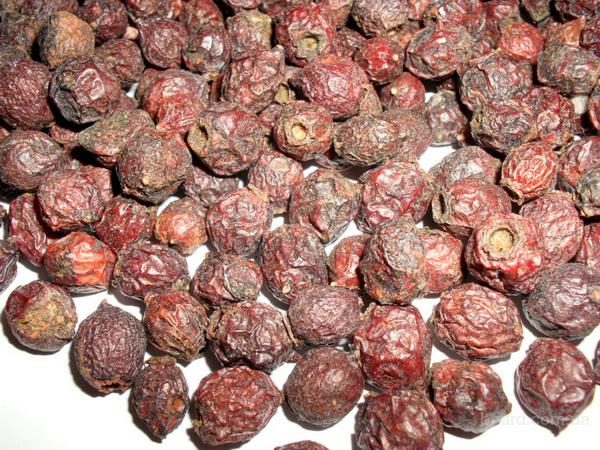
Second way - very fast, but at the same time reducing the useful effect of hawthorn. Prepared raw material is laid out on a baking sheet and sent to the oven or electric dryer. The temperature is maintained at 40-60 degrees, or 30-40 degrees, if you need a higher quality, but at the same time a longer drying. It is not recommended to raise it above the specified threshold, otherwise the hawthorn can be burnt or baked. If drying is carried out in the oven, it is important not to forget from time to time to open its door, removing moisture from the cabinet. It will not be superfluous to mix fruits regularly, thus ensuring uniform drying. The whole process, in contrast to using the first method, takes several hours, not days.
Dried hawthorn can be stored in a wide variety of containers:
- Glass jars
- Fabric bags
- Paper bags
- Wooden drawers
- Cardboard boxes

The only condition is that the used container should be clean, located in a dry room with good access of fresh air. You can not use plastic bags as containers - they do not allow air to pass through.. The maximum shelf life in this form is 2 years, after which the raw materials begin to lose their useful properties.
Berry Frost
Another popular way to store hawthorn, which helps to preserve its beneficial properties, is to freeze its fruits in the refrigerator. Frozen berries are used in the same way as dried - apply them as flavoring additives to dishes, for preparation of compotes, tea, medicinal infusions. The process is carried out quickly - the washed and sorted raw materials are placed in food plastic containers and placed in the freezer. Optimum temperature condition - from -20 to -25 degrees. At temperatures above 20 degrees, fruits can give juice, at temperatures below 25 degrees, vitamins and other nutrients will begin to break down.
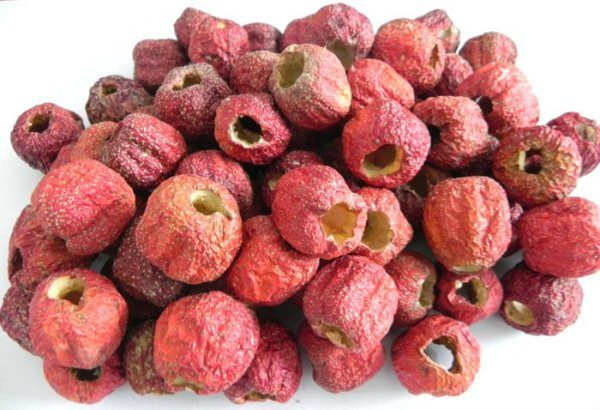
Cellophane bags can be used as containers, but in them the product is often crumpled and loses its attractiveness. Their walls should not be wet, so as not to stick to the insides of the chamber. It is possible to freeze fruits not only entirely, but also in the form twisted in a meat grinder or ground in a mortar. The resulting pulp is stored in a refrigerator in cans or bags. Such mashed potatoes are applied similarly to whole berries - for culinary and medical purposes. The recommended shelf life of frozen hawthorn - 6 months.
Preparing tinctures at home
Any part of a plant can be used as a raw material - fruits, bark, flowers, leaves. Apply it for therapeutic purposes. - This is an excellent folk medicine cures many diseases, while having almost no contraindications. Hawthorn tincture can be made in two ways:
- On the water
- On alcohol
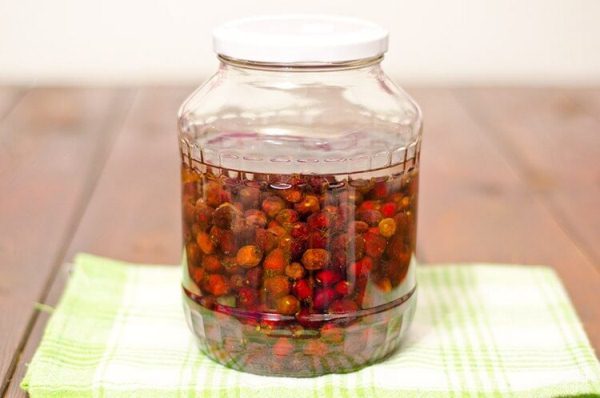
The washed raw material is poured with boiling water in a one-to-one relationship, and then rolled into a sterilized glass jar with an airtight lid. In the case of alcohol tincture Vodka or edible alcohol is used as a base, and the resulting liquid is filtered and sealed in clean bottles with tight-fitting lids. The tincture is stored in a dark place., protected from direct sunlight, at an air temperature of 10-14 degrees. This may be a cellar or a cool storeroom.
Canning
When canning, hawthorn loses some of its beneficial properties as a result of heat treatment. Used carefully selected fruits of which do:
- Jam
- Compotes
- Jams
- Jam
- Juices
Jam from hawthorn is done in the following way. 1 kg of washed berries is poured with a glass of water and 500 g of granulated sugar are poured, after which the resulting composition is cooked on the stove until it thickens completely. The finished jam is allowed to cool, and roll it into sterilized glass jars.
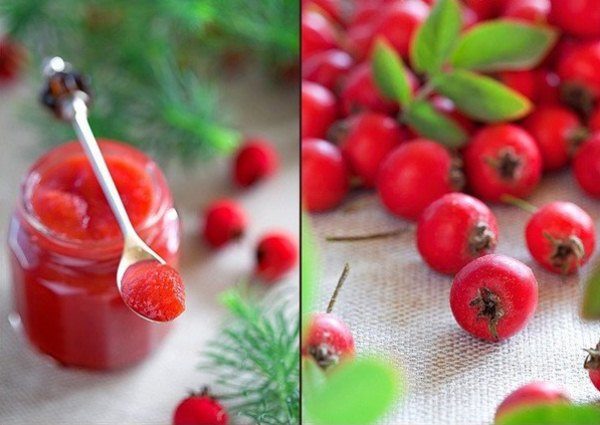
Hawthorn juice is also well suited for long-term storage.. 1 kg of fruit is washed and boiled in a small amount of water for 1-2 hours. After that, the berries are ground into a pulp, the consistency of which is puree, add 1l of water and 500g of sugar to the mixture, bring everything to a boil and immediately remove from heat. Juice rolls in cans immediately, hot.
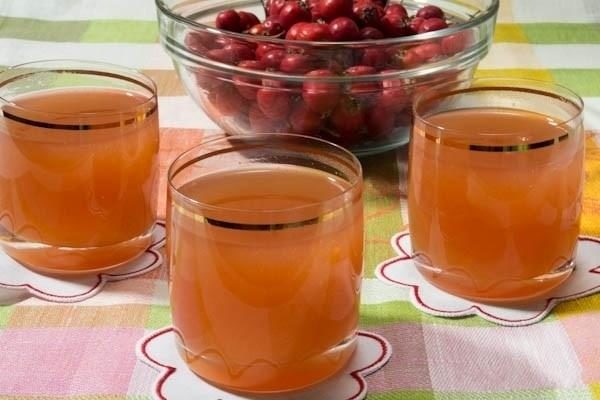
Hawthorn jam is prepared using sour apples. Apples and berries are boiled for a while in a small amount of water, then crushed into puree. 1 kg of puree of both types is placed in the pan, 1 l of water is poured in and 1,500 g of granulated sugar is poured.The resulting mass is boiled down to the required thickness and rolled into small jars.
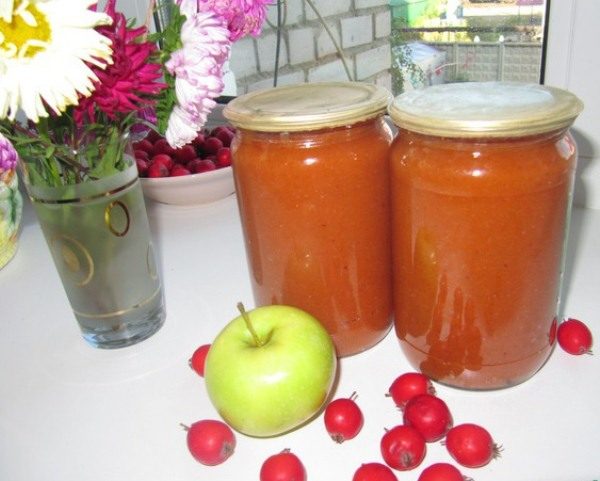
Hawthorn compote is distinguished by increased laboriousness of cooking.. Fruits are cleared of seeds, poured with 30% sugar syrup, and then infused in this form for 10 hours. The resulting infusion is filtered from the berries, put on the fire and brought to a boil. After that, it is poured into a sterilized glass container with an airtight lid, at the bottom of which stacked soaked fruits.
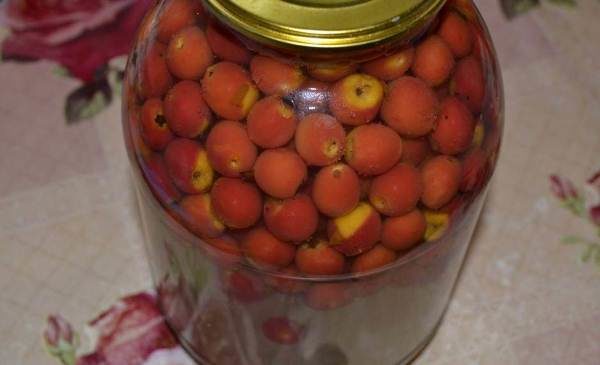
Hawthorn jam is prepared in a similar way to making jam from other types of berries.. It can be used as a five-minute, and a long process of cooking. Fruits can be cleaned or not stoned, left whole or used in a ground form.

Conclusion
Hawthorn is a unique natural product, not only a natural doctor, but also a desirable decoration for any table. Leaves, flowers and bark of the plant - a real storehouse of vitamins. As the fruits, which, in addition to medicinal purposes, can be used in cooking.In the hands of a skilled hostess, hawthorn berries quickly turn into useful and nutritious jams, jams and other sweet products that delight the family all year round.
